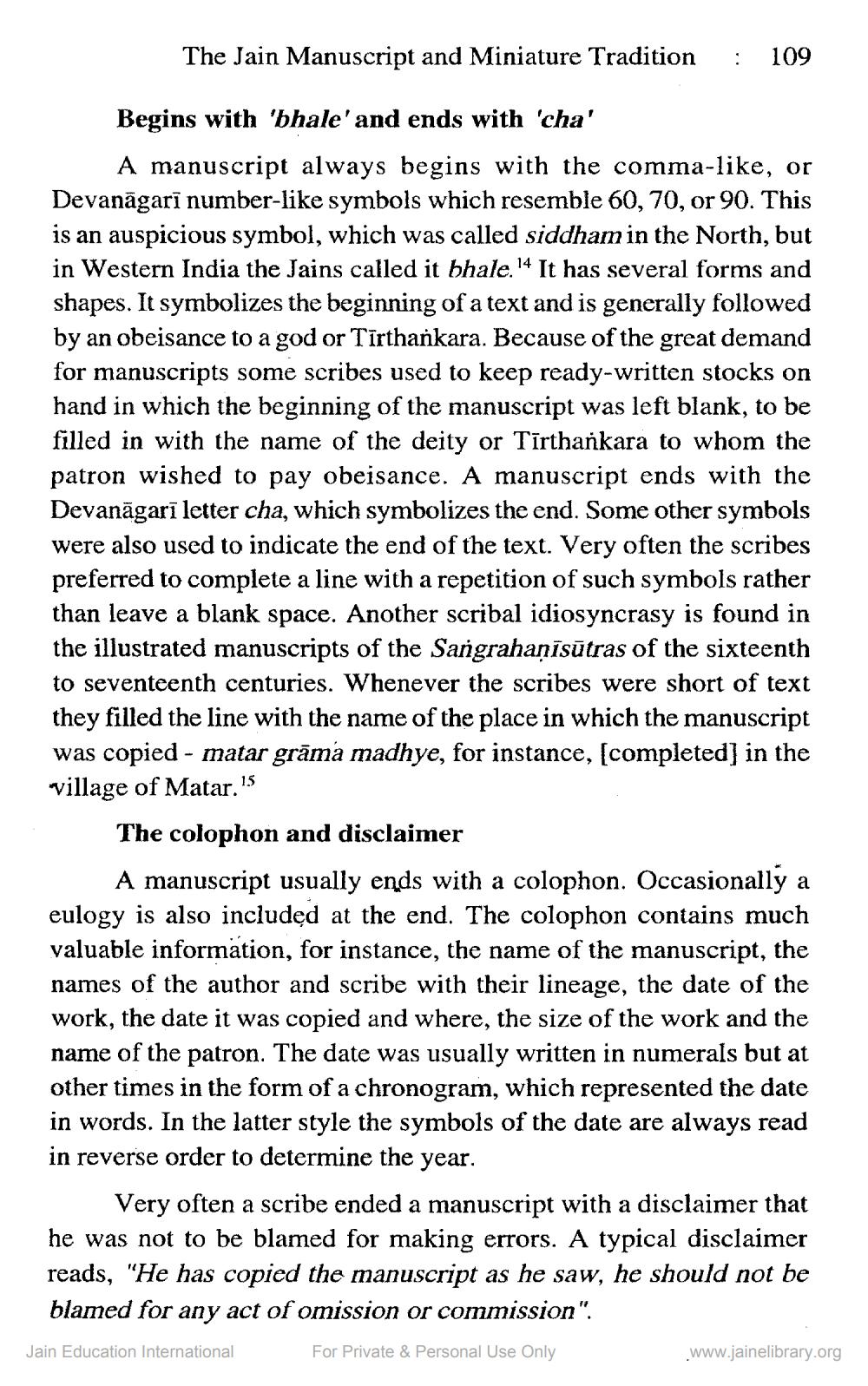________________
The Jain Manuscript and Miniature Tradition : 109
Begins with 'bhale' and ends with 'cha'
A manuscript always begins with the comma-like, or Devanagari number-like symbols which resemble 60, 70, or 90. This is an auspicious symbol, which was called siddham in the North, but in Western India the Jains called it bhale. 14 It has several forms and shapes. It symbolizes the beginning of a text and is generally followed by an obeisance to a god or Tirthankara. Because of the great demand for manuscripts some scribes used to keep ready-written stocks on hand in which the beginning of the manuscript was left blank, to be filled in with the name of the deity or Tirthankara to whom the patron wished to pay obeisance. A manuscript ends with the Devanagari letter cha, which symbolizes the end. Some other symbols were also used to indicate the end of the text. Very often the scribes preferred to complete a line with a repetition of such symbols rather than leave a blank space. Another scribal idiosyncrasy is found in the illustrated manuscripts of the Sangrahaṇīsūtras of the sixteenth to seventeenth centuries. Whenever the scribes were short of text they filled the line with the name of the place in which the manuscript was copied - matar grāma madhye, for instance, [completed] in the village of Matar. 15
The colophon and disclaimer
A manuscript usually ends with a colophon. Occasionally a eulogy is also included at the end. The colophon contains much valuable information, for instance, the name of the manuscript, the names of the author and scribe with their lineage, the date of the work, the date it was copied and where, the size of the work and the name of the patron. The date was usually written in numerals but at other times in the form of a chronogram, which represented the date in words. In the latter style the symbols of the date are always read in reverse order to determine the year.
Very often a scribe ended a manuscript with a disclaimer that he was not to be blamed for making errors. A typical disclaimer reads, "He has copied the manuscript as he saw, he should not be blamed for any act of omission or commission".
Jain Education International
For Private & Personal Use Only
www.jainelibrary.org




